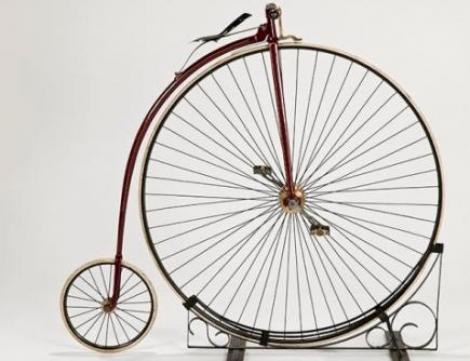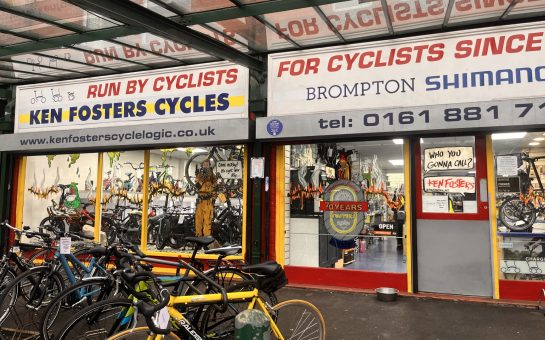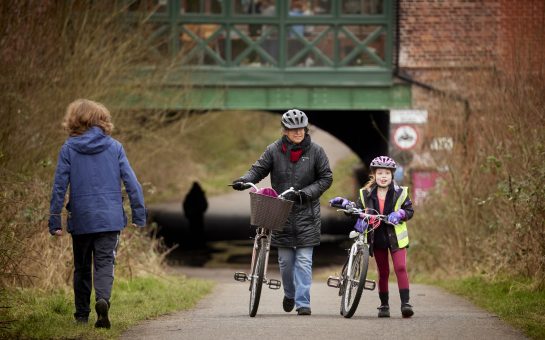If you think staying upright on a bike these days is tough, imagine riding Manchester’s Victorian-era ‘boneshaker’.
While the recent thrills and spills of the Tour de France passing through northern England got cycling fans excited, to truly appreciate the sport head to the Museum of Science and Industry from this Saturday July 19 to March 1 next year for ‘Pedal Power’.
The National Cycling Centre is 20 years old this year though Manchester’s connection to the two-wheeled sport stretches back much further than Team GB’s gold rush at the past two Olympics.
Meg McHugh, curator of the exhibition, said: “People might just think that Manchester’s got this very recent connection with cycling because the Velodrome’s been here for 20 years.
“But actually Manchester’s links with cycling go back to the very earliest time when cycling was being introduced into the country.
“There were people in Manchester making bikes from as early as the 1860s, and we have a boneshaker (main picture above) in our collection which is from 1868, so we think it’s one of the first bikes to have been made in Britain.”
Manchester’s bike manufacturing industry continued into the 20th century, accompanying an active club circuit.
“Manchester had a very early outdoor velodrome which was at Fallowfield – there were lots of races going on there and it was a really popular spectator sport,” said McHugh.
Archivist Jan Shearsmith said that they had spoken to a Fallowfield velodrome veteran who had ridden there in the 1950s – so popular was it that competitors were coming in from abroad to race there.
“Manchester has always had stars, they just haven’t had the acknowledgement that they probably should have had,” Shearsmith said.
The exhibition came about as a way of promoting the museum’s collection of historic bikes, and also links into the Tour de France visiting Britain and the Commonwealth Games in Glasgow.
One such contraption, the high ordinary bicycle (below) made by William Harrison, Manchester, around 1885, provided speed-obsessed daredevils their chance to fling penny-farthings around grass tracks, wowing spectators in the process.

A LIFE LESS ORDINARY: William’s Harrison’s high ordinary ‘penny-farthing’ bicycle, built for pure speed.
As well as the museum’s own objects, the exhibition features borrowed items, such as a World Championship rainbow jersey worn by Britain’s first cycling superstar, Reg Harris.
“He was a boy from a working-class background in Bury and he got interested in cycling through having a job in a cycling shop,” said McHugh.
Harris won two Olympic silver medals in 1948, shortly after breaking his back in two places in a car accident.
Determined not to miss the Games, Harris had a special cast made which allowed him to continue training and earn medal success for Britain.
“He captured the popular imagination because he was a working-class man who transformed his life into this massive success story,” said McHugh.
“If you go to the Velodrome now there’s a bronze statue of him looking out over the boards, watching the new generation whizz by.”
Harris was not the only British success story in the early days of Olympic cycling.
Jack Sibbit won an Olympic silver medal in 1928 but he was also a bicycle maker, with one of his bikes – a tandem, also from 1928 – featuring in the exhibition.
“[Sibbit] would have gone to the 1932 Olympics in Los Angeles, but he couldn’t afford to close his bike shop for the two weeks that he would have been away, so he missed out on that opportunity,” said McHugh.
“So there are highs and lows in cycling all the way through its history.”
The highs have come at a most consistent rate in the last 20 years, since the building of the National Cycling Centre.
It sparked a series of events which has led to British domination of the track, as well as two Tour de France winners.
That recent success is also reflected in the exhibition, which features filmed interviews with members of the current British team, such as Ed Clancy, Becky James and Dame Sarah Storey.
“British Cycling has done us proud with the interviews,” said Shearsmith.
“The focus was on basic questions – how they got interested in cycling and their experience of how they became involved with British Cycling, their training, what it’s like to ride in the Velodrome and also suggestions for how to get involved.”
McHugh said that the exhibition has been aimed at a family audience, not cycling specialists, and she hoped it might inspire the next generation of Sir Chris Hoys and Victoria Pendletons.
“We’ve got an interactive in there so that people can have a go at a time trial, to see how they do against some of the greats.
“We’ve done a lot of interviews with young people who are in cycling clubs now, it’s not just these elite cyclists – the Velodrome’s open to everyone.
“Hopefully someone will come through the exhibition and be inspired to take up the sport.”
Main image courtesy of MOSI, with thanks.



